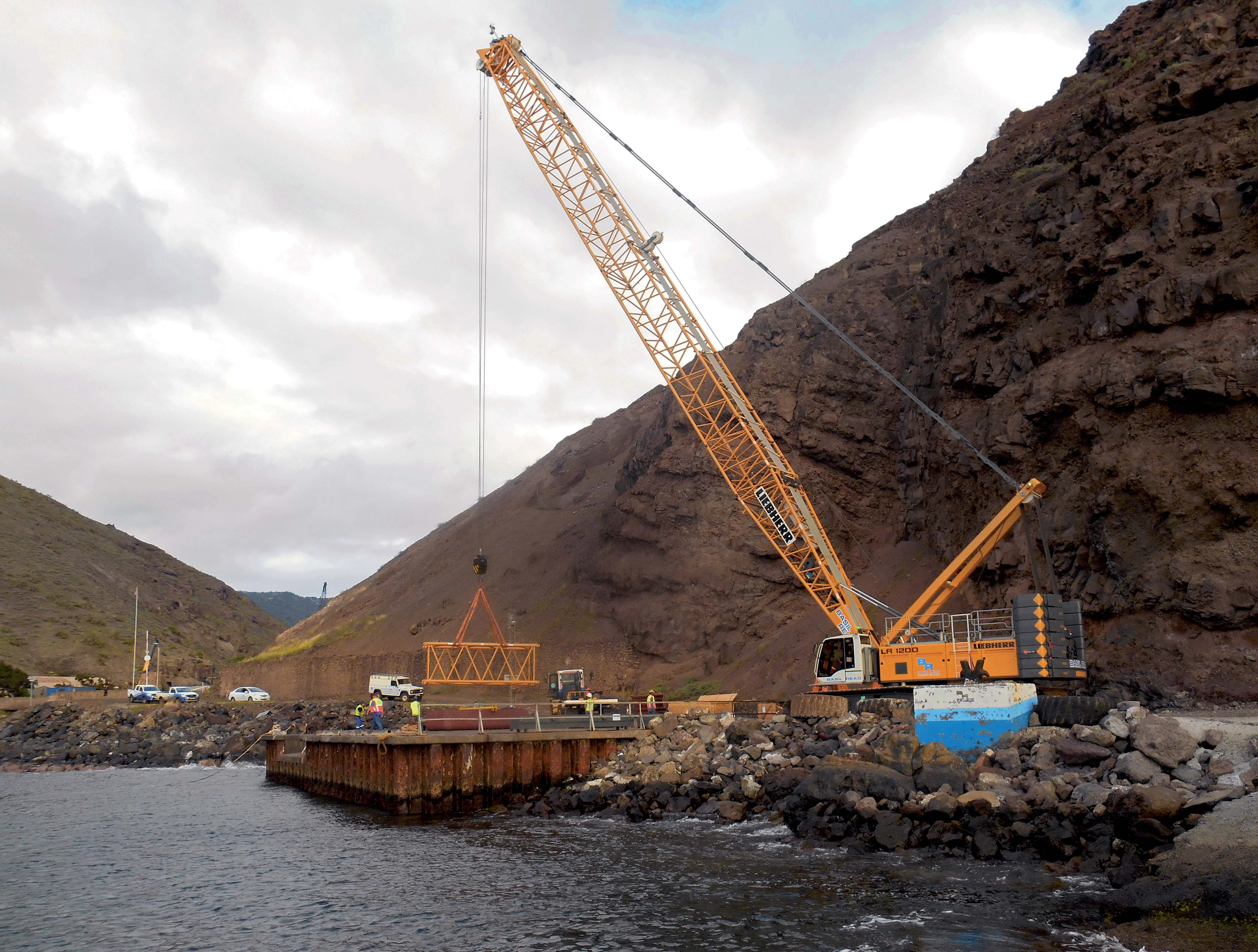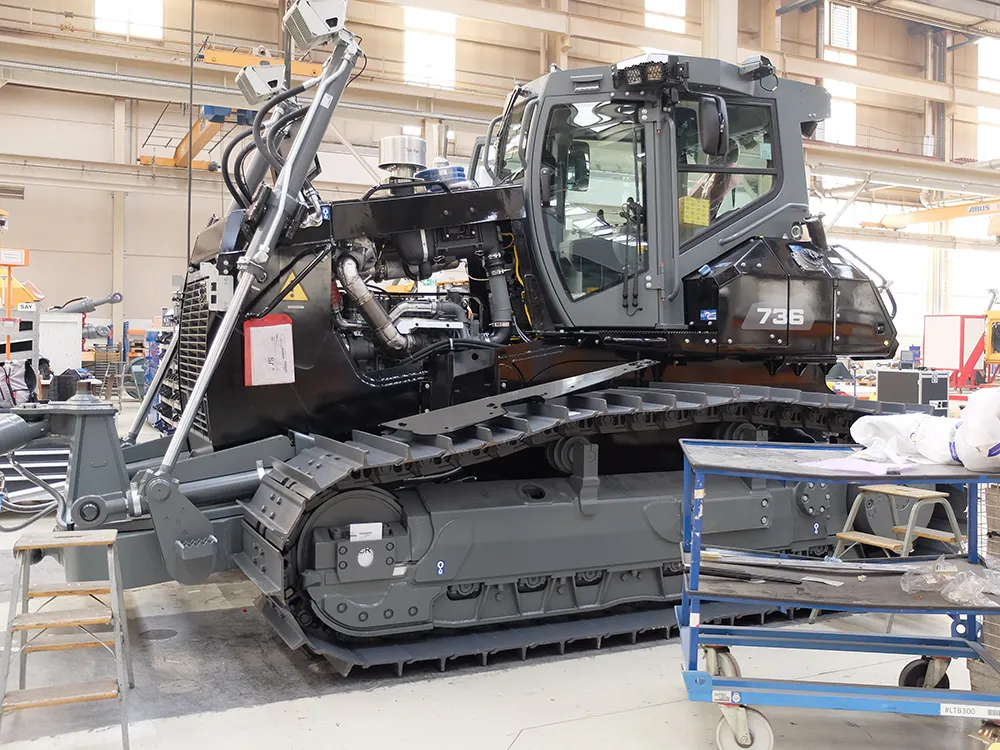Two Liebherr machines, one LR 1200 crawler crane and one HS 895 HD duty cycle crawler crane, are currently employed in the construction of an international airport on Saint Helena. The island’s seclusion poses a particular challenge for this project Saint Helena, known as Napoleon’s last exile, is one of the oldest British colonies and is definitely one of the most remote places on earth. Located more than 2,000km from the African mainland in the South Atlantic Ocean, the British Overseas Territory Saint H
June 30, 2014
Read time: 2 mins

Two Liebherr machines, one LR 1200 crawler crane and one HS 895 HD duty cycle crawler crane, are currently employed in the construction of an international airport on Saint Helena. The island’s seclusion poses a particular challenge for this project
Saint Helena, known as Napoleon’s last exile, is one of the oldest British colonies and is definitely one of the most remote places on earth. Located more than 2,000km from the African mainland in the South Atlantic Ocean, the British Overseas Territory Saint Helena has only been accessible by ship to date.
Starting from Cape Town, South Africa, for instance, the journey currently takes about five days. In order to improve the transport infrastructure to and from the island an international airport has been under construction since early 2012.
For this project two Liebherr cranes, belonging to the South African construction group Basil Read, were delivered to Saint Helena. The powerful LR 1200 crawler crane with a lifting capacity of 200tonnes was shipped in 33 separate sections from the port of Walvis Bay, Namibia, to Saint Helena at the beginning of 2014. Only a few weeks later an HS 895 HD duty cycle crawler crane arrived on the island.
Not only was the distance challenging, but also the permissible transport weight proved to be an aggravating factor. The HS 895 HD had to be disassembled into single parts, each weighing less than 40tonnes, in order to be loaded onto the ship. The winch, the A-frame, the rear counterweight cylinder as well as the boom back stops had to be removed from the crane. The airport is being built on Prosperous Bay Plain in the east of the island at an estimated cost of some €270 million.
This is one of the largest areas of relatively level ground on the mountainous island. After the scheduled completion of the airport in 2016 it will be sufficient for the landing of most short and medium range aircraft. This will not only boost the touristic ambitions and the economic development of the island but will also be of strategic importance for international air traffic as a stopover for airlines operating Cross-Atlantic flight routes.
Saint Helena, known as Napoleon’s last exile, is one of the oldest British colonies and is definitely one of the most remote places on earth. Located more than 2,000km from the African mainland in the South Atlantic Ocean, the British Overseas Territory Saint Helena has only been accessible by ship to date.
Starting from Cape Town, South Africa, for instance, the journey currently takes about five days. In order to improve the transport infrastructure to and from the island an international airport has been under construction since early 2012.
For this project two Liebherr cranes, belonging to the South African construction group Basil Read, were delivered to Saint Helena. The powerful LR 1200 crawler crane with a lifting capacity of 200tonnes was shipped in 33 separate sections from the port of Walvis Bay, Namibia, to Saint Helena at the beginning of 2014. Only a few weeks later an HS 895 HD duty cycle crawler crane arrived on the island.
Not only was the distance challenging, but also the permissible transport weight proved to be an aggravating factor. The HS 895 HD had to be disassembled into single parts, each weighing less than 40tonnes, in order to be loaded onto the ship. The winch, the A-frame, the rear counterweight cylinder as well as the boom back stops had to be removed from the crane. The airport is being built on Prosperous Bay Plain in the east of the island at an estimated cost of some €270 million.
This is one of the largest areas of relatively level ground on the mountainous island. After the scheduled completion of the airport in 2016 it will be sufficient for the landing of most short and medium range aircraft. This will not only boost the touristic ambitions and the economic development of the island but will also be of strategic importance for international air traffic as a stopover for airlines operating Cross-Atlantic flight routes.









